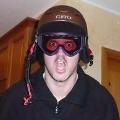
Where's the six speed graph which shows how the 6 speed delivers torque to the road better than a 5 speed?
What we can do now is get the formulae from Bob Butler off NSXPrime. Given the torque curve and gearing, and weight of a car, it should be possible to then calculate the velocity of a car over a given distance. The velocity would have to be worked out by integrating the acceleration or something like that.
Then, some more meaningful figures will be produced. 0-60 times don't mean much. What does mean something is over a 1/2 mile, if two cars started at the same time, at 0mph who would cover the distance the fastest and by how much or how far.
Spreadsheet racing is much cheaper than the real thing.
If your fear of staying alive, outweighs the thrill of making the corner, brake.






 Reply With Quote
Reply With Quote


